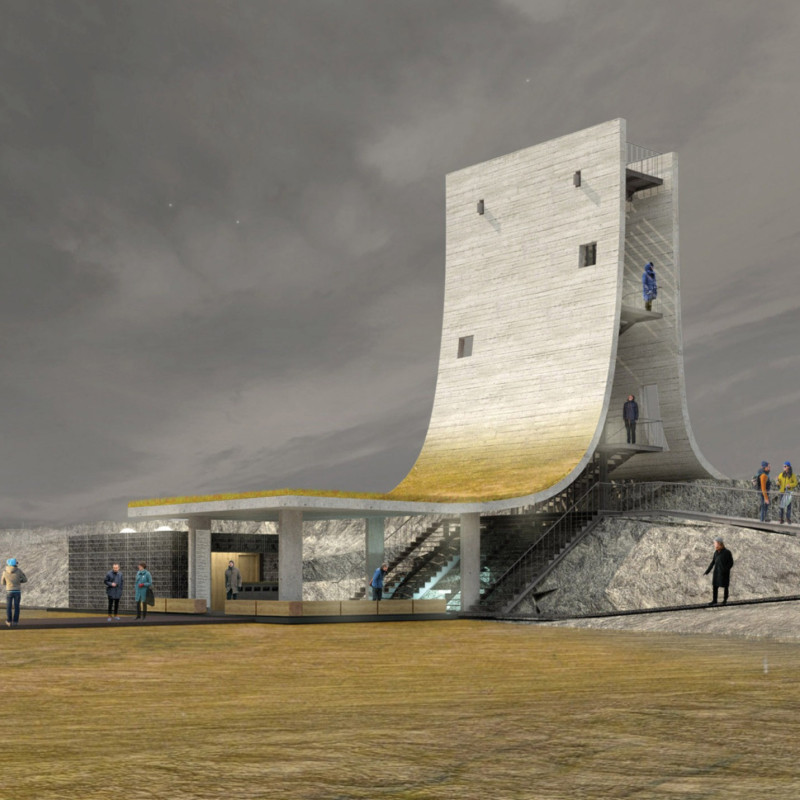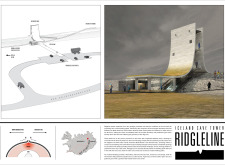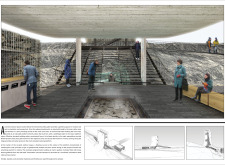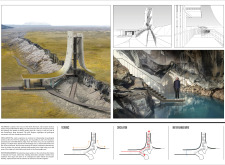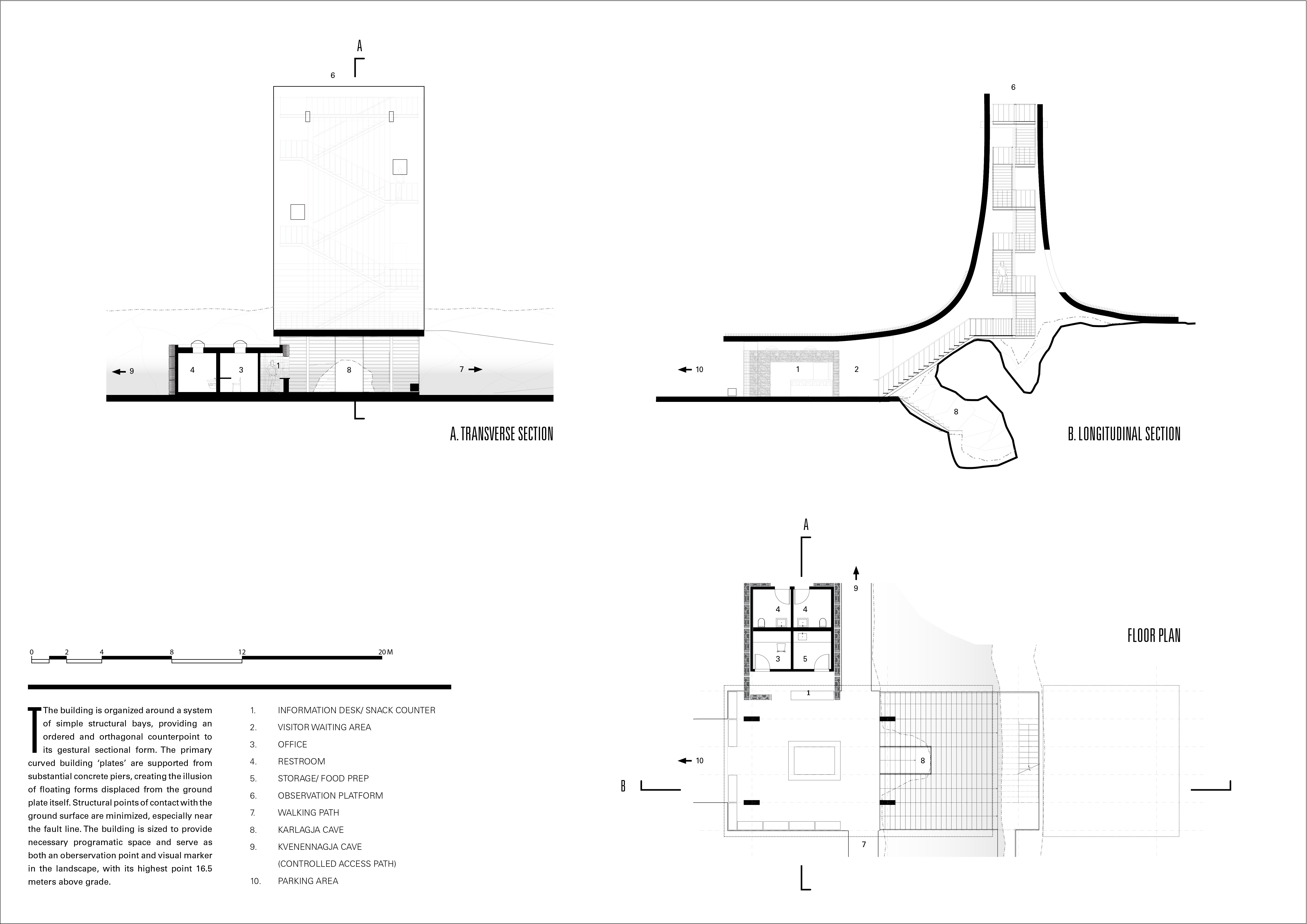5 key facts about this project
The Ridgeline is set in the dramatic landscape of the Mid-Atlantic Ridge, where the North American and Eurasian tectonic plates meet. The design aims to create an engaging experience for visitors by connecting them to the geological features of the area. The concept centers around two curved building plates that mirror the movement of the fault line, bringing together architecture and nature in a meaningful way.
Structural Composition
Two curved building plates form the core of the design, referencing the area's tectonic activity and providing support for the structure. These plates sit directly above the fault line, allowing visitors to explore the geological forces that shape the landscape. A stairway is suspended between the plates, which minimizes contact with the ground and provides a pathway for movement through the space.
Spatial Organization
The layout supports easy movement for visitors, connecting them to observation points and geological sites. The stairway follows a north-south orientation along the fault line, guiding people to viewpoints that highlight the beautiful scenery. Openings in the building plates create framed views, enhancing the sense of connection between the inside and outside.
Functional Spaces
The enclosed area includes practical facilities such as a field office, café, restrooms, and storage. An information desk is placed outside to serve as the café counter, allowing for straightforward interaction. A covered outdoor space invites social gatherings, featuring a geothermally heated hearth that serves as a cozy focal point.
Sustainability Features
An important aspect of the design is its approach to sustainability. The green roof collects rainwater, which is stored in an underground cistern for use in irrigation and restrooms. This technique not only fits well with the local ecology but also nods to traditional Icelandic building practices. The structure is organized into simple bays, supported by concrete piers that give the appearance of floating forms, making the architecture feel connected to the geology.
A notable design detail is the reduced structural contact with the ground near the fault line. This careful consideration helps preserve the environmental integrity of the site while encouraging exploration of both the geological and architectural aspects of the project.


